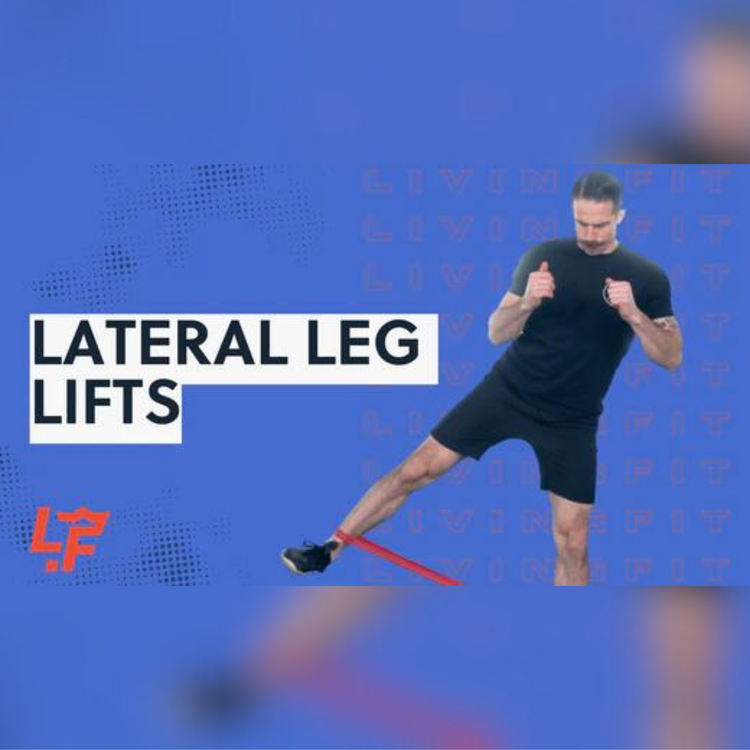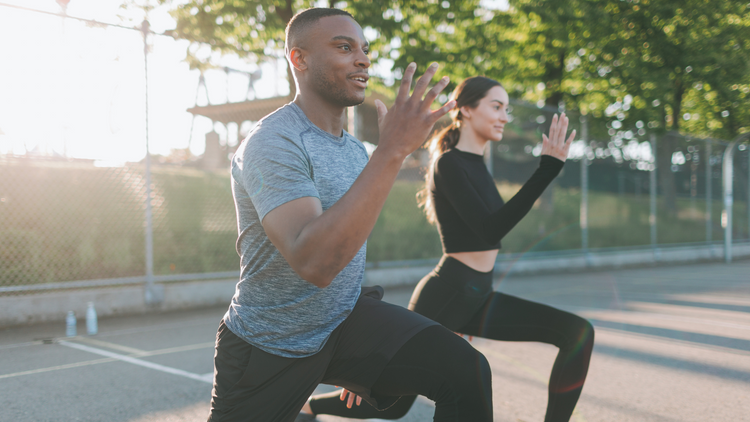Lateral Leg Lifts With Resistance Bands

Resistance bands are versatile tools that can add an extra dimension to your workout routine, targeting muscles in unique ways. One such lateral leg exercise that effectively engages the hip abductors and glutes is the lateral leg lift with resistance bands. Whether you're a beginner or an experienced fitness enthusiast, incorporating this exercise into your regimen can help enhance lower body strength, stability, and overall athletic performance. Let's delve into the details of how to perform lateral leg lifts with resistance bands, their benefits, variations, and safety precautions.
How to Perform Lateral Leg Lifts with Resistance Bands
-
Select the Right Resistance Band
- Choose a resistance band with an appropriate level of tension. Beginners may opt for lighter bands, while more experienced individuals can use bands with higher resistance.
- Ensure the band is securely anchored to a stable object, such as a door anchor or a sturdy piece of furniture.
-
Position Yourself
- Stand tall with your feet hip-width apart, maintaining a slight bend in your knees.
- Place the resistance band around your ankles or just above the knees, depending on your preference and comfort level.
- Engage your core muscles to maintain stability throughout the exercise.
-
Execute the Movement
- With control, lift one leg laterally away from your body, keeping it straight or slightly bent at the knee.
- Focus on engaging the muscles on the side of your hip (hip abductors) to lift the leg against the resistance of the band.
- Avoid leaning excessively to the opposite side or arching your back during the movement.
- Pause briefly at the top of the movement, ensuring maximum contraction of the hip abductors.
-
Lower and Repeat
- Slowly lower the lifted leg back to the starting position, maintaining tension in the resistance band.
- Complete the desired number of repetitions on one side before switching to the other side.
- Aim for smooth, controlled movements throughout the exercise to maximize its effectiveness.
Benefits of Lateral Leg Lifts with Resistance Bands
Improved Hip Stability
Strengthening the hip abductors enhances stability and balance, reducing the risk of injuries, especially in activities involving lateral leg lifts and other lateral movements.
Enhanced Hip Strength
Targeting the hip muscles helps improve overall lower body strength, which translates to better performance in various exercises and activities.
Injury Prevention
By strengthening the muscles surrounding the hip joint, lateral leg lifts with resistance bands can help prevent common injuries such as IT band syndrome and hip bursitis.
Functional Movement Training
This exercise mimics the movement patterns involved in activities like walking, running, and sports, making it a valuable addition to functional training routines.
Toning and Sculpting
Regularly performing lateral leg lifts can help tone and sculpt the muscles of the hips and thighs, contributing to a more defined lower body.
Variations and Progressions
- Standing Lateral Leg Lifts
- Side-Lying Lateral Leg Lifts
- Increase Resistance
Safety Precautions
- Maintain Proper Alignment
- Control the Movement
- Avoid Overexertion
- Listen to Your Body
Incorporating Lateral Leg Lifts into Your Workout Routine
- Warm-Up: Begin your workout with a dynamic warm-up to prepare your muscles for exercise, including movements that target hip mobility and activation.
- Main Workout: Include lateral leg lifts with resistance bands as part of your lower body or full-body strength training routine. These lateral leg exercises are crucial for building strength. Aim for 2-3 sets of 10-15 repetitions on each side.
- Cooldown and Stretch: After completing your workout, cool down with static stretches focusing on the hip and leg muscles to promote flexibility and recovery.
Conclusion
Lateral leg lifts with resistance bands are a highly effective exercise for strengthening the hip abductors, improving hip stability, and enhancing overall lower body strength. By following proper technique, gradually increasing resistance, and incorporating this exercise into your regular workout routine, you can reap the numerous benefits it offers while minimizing the risk of injury. Whether you're an athlete looking to enhance performance or a fitness enthusiast aiming for toned and sculpted hips, lateral leg lifts with resistance bands are a valuable addition to your exercise repertoire. Unlock the strength and stability of your hips with this simple yet impactful exercise.
Want more tips like this? Click here: https://bit.ly/3JMb4w2
Want weekly resistance band workouts? Click here: https://bit.ly/3AeWHNO
Helpful Resources:










